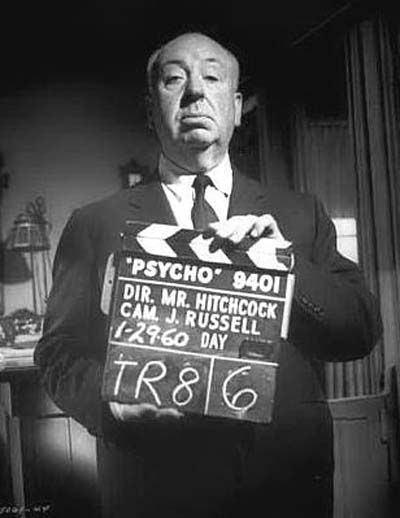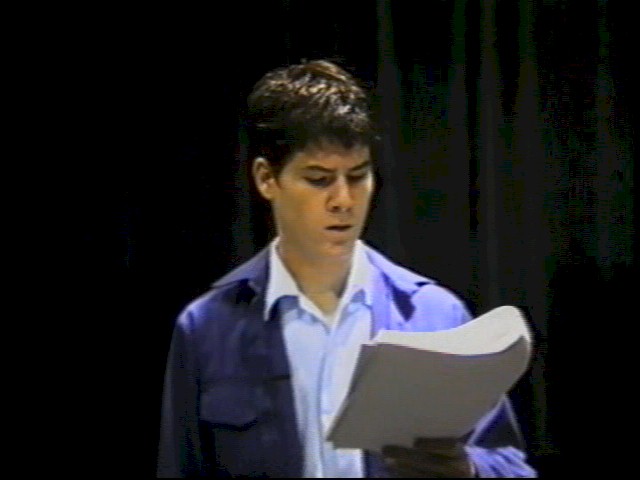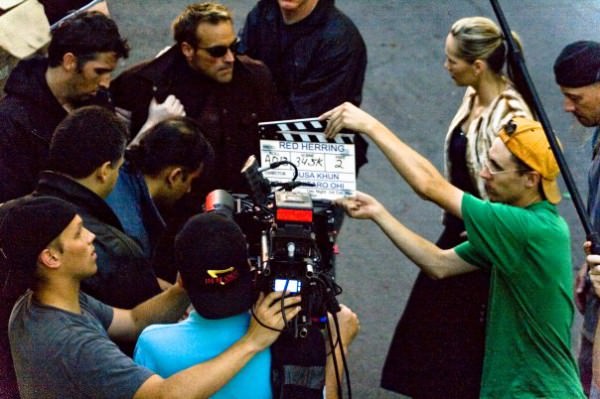PRODUCTION ASSISTANT
Creating a studio-backed Hollywood film can be a huge undertaking, with hundreds of union craftsmen, directors, producers and actors all trying to row in the same direction. Meanwhile, dozens of small but vital chores start to pile up, with no one to address them. Enter the production assistant. A production assistant is a combination of office intern and entry-level gopher hired specifically by producers to perform routine tasks on and off the movie set.
A production assistant's duties change from day to day. He or she might deliver script changes to the director at a remote shooting location, or coffee to the lighting crew. The producers may send a production assistant to pick up a replacement part for a camera or deliver film canisters to the processing lab. If a scene calls for extras or atmosphere, a production assistant might participate as a background actor or assist in the direction of hired extras. It's not unusual for a production assistant to find himself performing menial tasks like operating a snow machine or collecting props after a scene.
The job of production assistant pays very little, if anything, but many people take it on for the sheer thrill of working on a major film. A production assistant may have an opportunity to interact professionally with major actors and directors. There may be some travel to exotic set locations as well. Sometimes a production assistant may get an official screen credit, which can be a positive step towards bigger and better positions in the future. The experience gained by working as a production assistant can be invaluable to film students.
There are a few downsides to working as a production assistant. The job can lead to very long hours spent trying to satisfy all of the production staff's needs. Schedules can vary, from an all-night shoot on Monday to an all-day shoot on Wednesday. Production assistants must be flexible enough to handle all sorts of assignments, no matter how menial they may seem. It's all about the finished product when working in the film industry.
DIRECTOR
A director is responsible for overseeing every creative aspect of a film, from start to finish. From the "look" of the film to trademark lighting or mood, you can recognize the best directors' films by their artistic signatures. Alfred Hitchcock, Steven Spielberg and Woody Allen, for example, each leave their distinctive mark on every film they make.
When a director reads a script he or she develops a personal vision for how that story should be told. Whether it is a dark tale, a story of triumph, or one of passion, the director's unique vision will be responsible for presenting it in a way that no other director would. A director sees beyond the words on the page to a moving picture with specific shots, lighting, mood, nuance and emotion -- all visually created for the screen.
If the initial script needs work, the director will make suggestions to the writer for improving the script. The director may also bring key crew members to the project that he has successfully worked with in the past. He will be responsible for approving each and every camera angle, lens effect, the lighting and set design.
The director also works closely with the cast, meeting before each scene to do a run through. Here he gets a feel for how the actor will play the scene. If needed, the director can provide motivational insight, or tweak performances by making suggestions. He will also listen to the suggestions of the actors.
PRODUCER
A film producer oversees the making of movies. The producer initiates, coordinates, supervises and controls matters such as raising funding, hiring key personnel, and arranging for distributors. The producer is involved throughout all phases of the filmmaking process from inception to completion of a project.
In the early 20th century, the producer also tended to wield ultimate creative control on a film project. However, with the demise of Hollywood’s studio system in the 1950s, creative control began to shift into the hands of the director.
Changes in the way movies were distributed and marketed in the 1970s and ‘80s gave rise to the modern-day phenomenon of the Hollywood blockbuster, which tended to bring power back into the hands of the producer. While marketing and advertising for films accentuates the role of the director (apart from a few of the more well-known film makers) it is usually the producer who has the greatest degree of control in the American industry.
EXECUTIVE PRODUCER
Studio executives, or executive producers, will visit the set to make sure the project is on schedule and on budget. The director will work with the studio executives to make sure they're happy about how the film is progressing.
At the end of the shooting day, the director, producer and key crew members will screen that day's footage in what are called dailies. Here they can see if scenes will need to be re-shot. The director will also be involved in post-production when the film gets edited into its final form.
Although a director is responsible for the vision behind a film, a good director also listens to his crew and cast and works collaboratively. There are many talented people involved in the making of a film and utilizing each person's talent is what makes a director, and the film, a success.
CINEMATOGRAPHER
While a film director may have a general idea of how a scene should look, it is the responsibility of a cinematographer to make it happen. A cinematographer is an expert in both the technical and artistic capabilities of a movie camera. He works closely with the director during principal shooting to properly frame each shot according to the script and/or the director's personal vision. Chief cinematographers may also be credited as 'director of photography' or DOP.
A cinematographer may also be considered a camera operator, especially if his decision-making power is minimal. A working cinematographer actually looks through the lens of a camera while filming a scene, much like a still photographer snaps individual photographs. The lighting director and crew often work with the cinematographer to make sure the amount of light reflecting off the actors and scenery is acceptable. If a special lens or filter is required for a particularly artistic effect, it’s the cinematographer's job to make the changes.
If a film has a large budget, several cinematographers may be hired to work different camera set-ups. Smaller film companies may only be able to hire one cinematographer, who must be present for every shot. Occasionally, a director may take over the cinematographer's duties if the set needs to be closed for privacy. A sweeping view of a city at the beginning of a film may be the work of a cinematographer alone.
It is not unusual for a film director to hire the same cinematographer for most of his or her productions. The working relationship between a director and a 'cinema photographer' requires a shared vision with regards to the overall look of a film. Many of the greatest films in Hollywood history achieved their status through the unsung work of the cinematographer. Orson Welle's masterpiece "Citizen Kane" benefited greatly from the contributions of cinematographer Gregg Toland, for example. Toland created camera movements that had never been used before in major films.
Becoming a cinematographer requires years of technical training in the use of professional camera and video equipment. A period of apprenticeship under an experienced cinematographer may follow, leading to camera work for independent films or low budget Hollywood productions.
GAFFER
Professional electricians primarily responsible for lighting and electrifying a movie set. The term gaffer is often used interchangeably with chief lighting technician these days, but the tradition of gaffers goes back to the earliest film studios.
Lighting a primitive studio set often involved the use of ceiling-mounted mirrors to reflect natural sunlight. In order to move these mirrors throughout the day, long poles called gaffs were used by electricians or other crew members. The actual need for reflected sunlight may have disappeared, but the name gaffers remains as an honorary title for experienced electricians. Gaffers often work closely with the director of photography to set up special lighting effects or supply electrical power to stage equipment.
Gaffers are also responsible for hiring qualified electricians and assistants. They must also know which filters to employ for specific effects, and how to simulate such conditions as a moving train or flashing signs in the distance. Gaffers may have to work under hazardous conditions, setting up banks of lights high above a movie set or making repairs during bad weather. Some larger productions may call for enough generators to power a small city, so gaffers must also pay close attention to safety measures.
Some do-it-yourselfers may be familiar with an adhesive called 'gaffers tape'. This product looks similar to cloth-backed duct tape, but gaffers tape is not quite as adhesive. Gaffers actually use gaffers tape to bind cable wires together or attach lighting fixtures to other surfaces. Since movie and television sets are designed to be temporary, the less-adhesive gaffers tape allows electricians to remove set-ups without significant residue.
Gaffers often work their way up the ranks from basic electrician to best boy, the movie industry's name for a gaffer's chief assistant. Some people may be hired by a movie company as electricians, but they may not necessarily have specific training in that area. Basic set electricians may only be required to move electrical cables out of the camera operator's path or flip switches according to cues from the lighting director. Gaffers, on the other hand, usually have extensive electrical training and a strong interest in the artistic side of film making.
Other Relevant FTV sites
Pitching the Idea for a Film : http://filmpitch.blogspot.com/
The Western Genre: http://thewesterngenre.blogspot.com/
New Media Technology: http://get-up-and-run.blogspot.com/
French New Wave: http://thefrenchnewwave.blogspot.com/
Product Placement: http://whyproductplacement.blogspot.com/
Tuesday, January 8, 2008
Subscribe to:
Posts (Atom)











